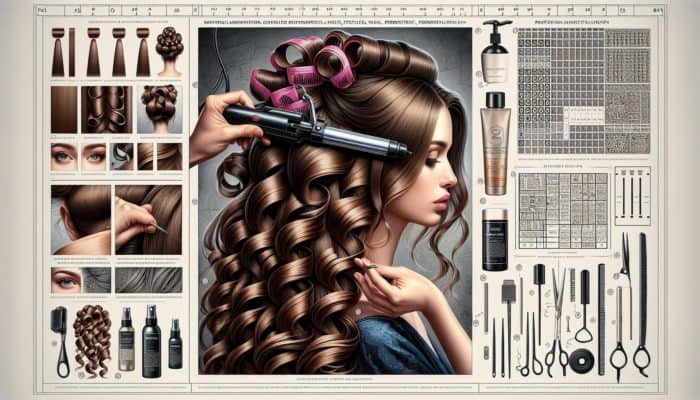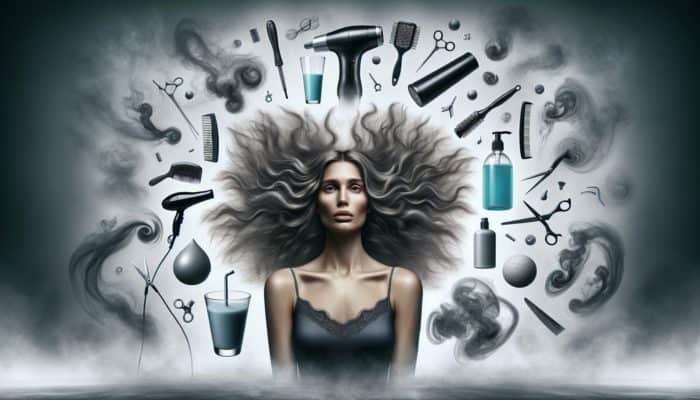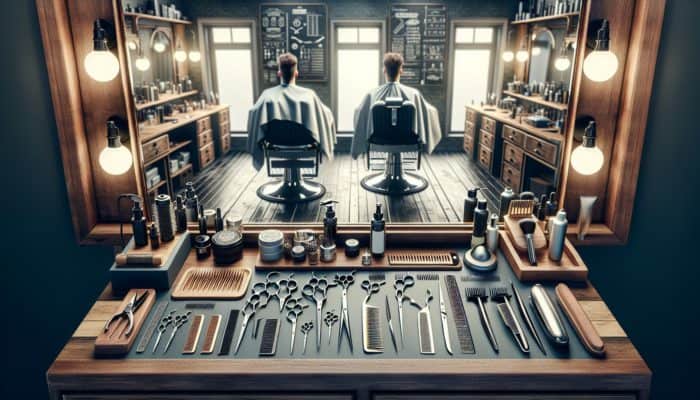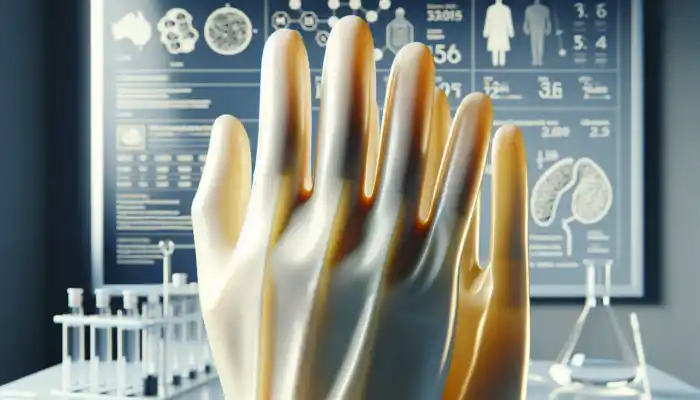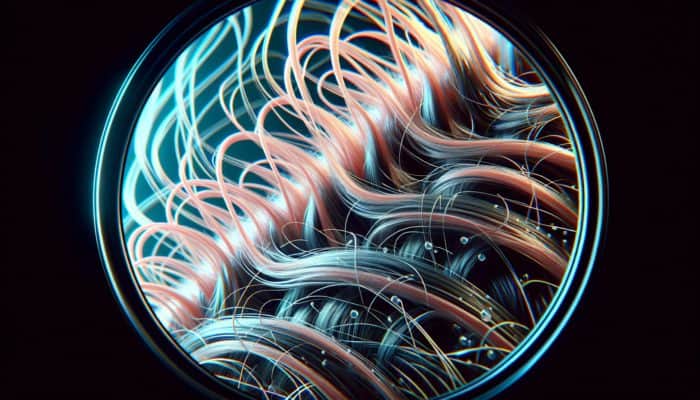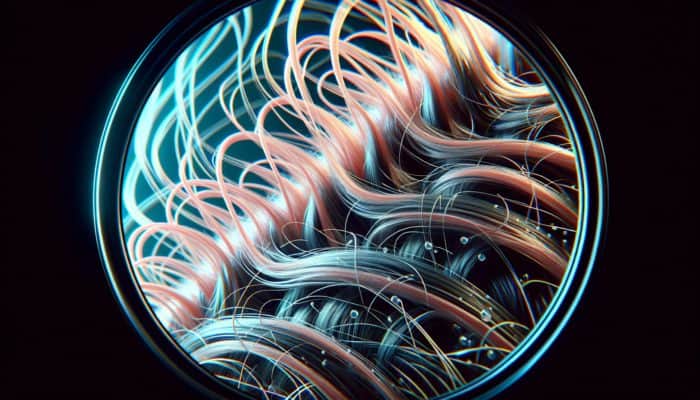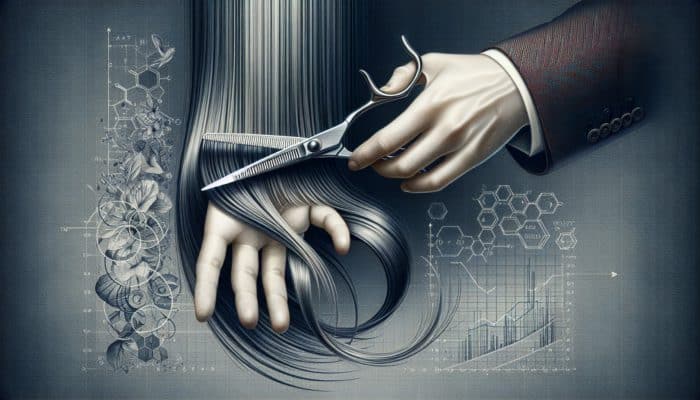Proven Steps to Prepare Your Hair for Safe Bleaching and Maintain Health Post-Process
Ensuring Hair Health Post-Bleaching: To achieve beautifully vibrant and healthy hair after undergoing the bleaching process, meticulous planning is essential, well before any bleach is applied to your strands. This preparatory stage is crucial; it involves equipping your hair with the necessary nutrients and strength to withstand the intense challenges that accompany the colouring process. Think of this phase as building a robust protective barrier that enables your hair to remain lush, strong, and resilient, even in the face of potential damage due to chemical exposure during bleaching.
Conducting a Thorough Hair Health Evaluation for Best Bleaching Outcomes
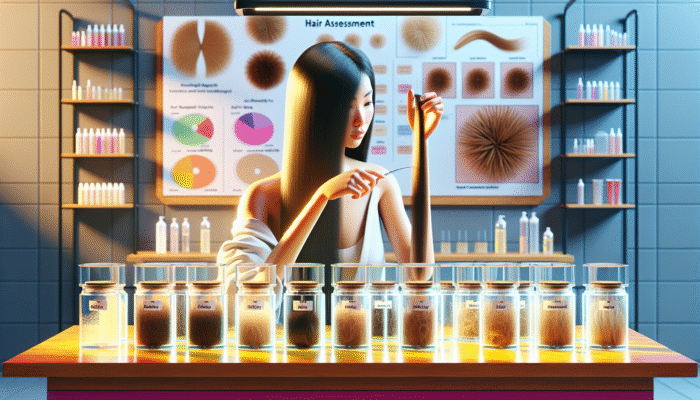
Before you embark on your bleaching journey, it’s imperative to conduct a thorough evaluation of your hair's existing condition. Are you noticing signs of frizz, brittleness, or a deficiency in moisture? A frank and detailed assessment will significantly influence your approach to the bleaching procedure. Performing a strand test can yield vital information regarding your hair’s condition. Gently stretch a single strand; if it breaks easily, it signals that your hair may not be adequately prepared for the chemical treatment that lies ahead.
Moreover, enlisting the expertise of a professional stylist can be tremendously beneficial. They can provide tailored insights specifically suited to your hair type. This consultation could be the deciding factor between achieving vibrant, healthy locks or facing hair that ends up resembling straw. By understanding your hair’s unique characteristics—whether it’s fine, coarse, straight, or curly—you can select the most appropriate products and techniques for your ongoing care regimen.
Choosing the Right Bleach for Your Unique Hair Type
When it comes to selecting a bleach, approach this decision with the same meticulousness a gourmet chef applies when sourcing high-quality ingredients. Not all bleach products are created equal; certain formulas are more compatible with specific hair types or colours than others. For example, if your hair is fine, opting for a gentler bleach formula can be a wise choice to prevent excessive damage. Conversely, individuals with thick, coarse hair may require a more potent option to effectively achieve their desired results.
Look for bleach products that contain conditioning agents or essential oils, as these can greatly minimize damage during the lightening process. Always choose brands renowned for their quality and effectiveness. Take the time to read user reviews and seek recommendations from haircare professionals. Remember, selecting the right bleach can become your most valuable ally in preserving your hair’s health after the bleaching process.
Establishing a Robust Pre-Treatment Routine for Hair Resilience
A comprehensive pre-treatment regimen can significantly enhance your hair's resilience before the bleaching process begins. Products infused with proteins, natural oils, or botanical extracts can create a protective barrier around the hair. Consider utilizing deep-conditioning masks filled with nourishing ingredients like argan oil, keratin, or shea butter. These treatments not only hydrate but also fortify your hair before it encounters the harsh realities of bleaching.
You may also want to explore a two-step pre-treatment strategy, which could involve using a clarifying shampoo followed by a deeply nourishing mask. This approach helps to eliminate product buildup while preparing your hair to absorb the beneficial elements of the mask more effectively. Such proactive steps lay a solid foundation, ensuring your hair is primed to withstand the rigors of the bleaching procedure.
Protecting Your Scalp During the Bleaching Process for Comfort
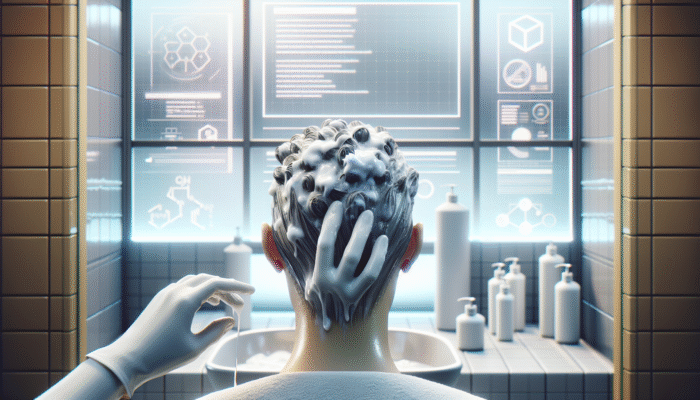
It’s essential to remember that your scalp requires as much care as your hair strands do. Applying a barrier cream or oil can significantly protect your scalp from irritation or burns that may result from the bleach. Products such as coconut oil or specialized scalp protection creams can create a physical barrier that shields your skin from harsh chemicals, greatly enhancing your overall comfort during the process.
Additionally, ensuring that the bleach does not come into contact with your scalp can help minimize discomfort, making the experience much more pleasant. This small yet crucial adjustment can greatly influence how you feel both during and after the bleaching procedure. Subsequently, after the process, it’s vital to continue providing your scalp with the necessary care, keeping it hydrated and soothed with appropriate post-care products.
Mastering Effective Bleaching Techniques for Healthy Hair After Colouring
The techniques employed during the application of bleach can have a profound impact on your hair’s integrity and overall wellness. Whether you choose to engage a professional stylist or undertake the bleaching process by yourself, understanding effective methods is crucial for achieving optimal results.
Leveraging Professional Expertise for Flawless Bleaching Results
Hiring a professional stylist is often the most prudent choice when it comes to bleaching. Their expertise ensures a uniform application, significantly lowering the risk of patchiness or over-processing. A skilled stylist will assess your hair's condition in real-time, making necessary adjustments to protect your strands from potential damage.
Furthermore, they can customize the bleach formula to specifically cater to your hair type and desired results, ensuring the process is as gentle as possible. Professional-grade products often contain advanced formulations designed to protect your hair during the bleaching process. Thus, if your budget allows, this option is undoubtedly the most advisable!
A Step-by-Step Guide to Successfully Bleaching Your Hair at Home
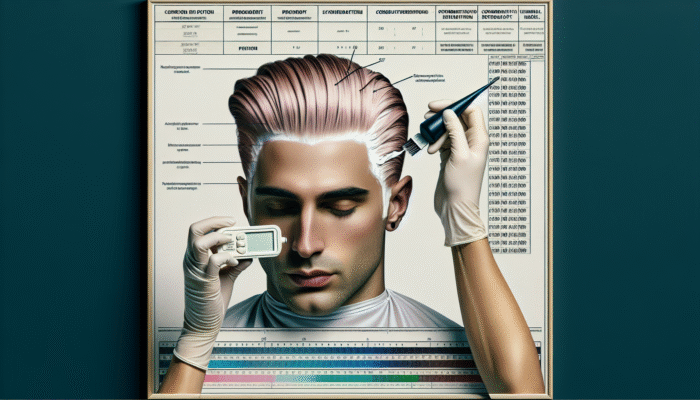
If you are determined to perform the bleaching process at home, it’s vital to approach it with a well-structured plan. Gather only the highest-quality products and ensure you read the instructions thoroughly—perhaps even twice! A systematic approach will guide you through the entire process, minimizing the chances of mistakes that could cause significant harm to your hair.
Moreover, take your time throughout the process. Dividing your hair into manageable sections and methodically applying the bleach will guarantee even coverage. Keeping a timer close at hand can help you monitor the timing without the anxiety of over-processing. Patience can greatly contribute to preserving your hair's health during this critical phase.
Timing Your Bleaching Process for Optimal Results
Timing is paramount during the bleaching process. It is essential to monitor your hair closely throughout the application, paying special attention to colour changes and shifts in texture. Over-processing can lead to irreversible damage, transforming your once-healthy mane into a brittle disaster.
A colour wheel can assist in determining the appropriate timing for achieving your desired shade. For example, the lighter the shade you wish to achieve, the longer you may need to leave the bleach on. However, it is crucial to never exceed the manufacturer’s recommended time. Stay vigilant and be ready to rinse as soon as you attain that ideal shade to ensure the best possible outcome.
Implementing Essential Post-Bleaching Care for Vibrant and Resilient Hair
Your responsibilities do not conclude once you have completed the bleaching process. It’s time to roll up your sleeves and engage in post-bleaching care—your gateway to achieving vibrant and healthy hair.
Immediate Aftercare: Revitalising Your Hair Right After Bleaching
The initial step in your post-bleaching care regimen is immediate aftercare. Utilize a deep conditioning treatment right after rinsing the bleach from your hair. Look for products enriched with moisture-retaining ingredients such as hyaluronic acid, aloe vera, or various natural oils. This step is critical as it aids in restoring hydration and repairing some of the damage inflicted during the bleaching process.
Consider using hair masks specifically formulated for coloured hair. These products can replenish lost nutrients and help your hair regain its elasticity. Consistent application of these treatments, especially in the weeks following bleaching, will yield a significant improvement in hair health. Remember, moisture is your best ally during this recovery phase!
Integrating Regular Conditioning into Your Hair Care Regimen
Make regular conditioning an essential part of your hair care routine. Incorporating a rich conditioner after each wash will help prevent your hair from becoming dry and brittle. Opt for conditioners that contain proteins to fortify your hair from within, enhancing its resilience.
Additionally, consider the benefits of leave-in conditioners. These products can provide ongoing moisture and protection throughout the day. Seek formulations that offer heat protection, which is crucial for maintaining your hair's integrity when using styling tools.
Reducing Heat Styling to Maintain Hair Health
Your freshly bleached hair deserves a break from heat styling tools. Embracing air-drying methods or exploring heatless styling alternatives can significantly lower the risk of further damage. If you must use heat styling tools, apply a high-quality heat protectant spray beforehand to shield your strands.
Get creative with your styling; braids, buns, or loose waves can be achieved without subjecting your hair to the harshness of heat. It is vital to give your hair a fighting chance to recover and thrive in its new hue. Remember, the less you rely on heat styling, the healthier your hair is likely to remain over time.
Nutrition and Hydration: Fundamental Aspects for Post-Bleaching Hair Health
While external care is undeniably important, do not overlook the substantial impact of proper nutrition and hydration on your hair’s health. What you consume directly affects the vitality and strength of your hair.
Upholding a Balanced Diet for Maximum Hair Vitality
Fuel your body with a balanced diet rich in essential vitamins and minerals. Foods high in vitamin A, C, D, and E, along with iron and zinc, play a crucial role in promoting overall hair health. Incorporate leafy greens, nuts, fish, and lean proteins into your meals to meet your hair’s nutritional requirements.
Consider the advantages of consuming salmon, which is rich in omega-3 fatty acids that enhance scalp health and moisture retention. Additionally, berries serve as an excellent choice due to their antioxidant properties, which help combat oxidative stress that can damage hair follicles.
Hydration: The Fundamental Building Block of Healthy Hair
Maintaining adequate hydration is crucial for preserving healthy hair. Drinking sufficient water keeps your hair and scalp hydrated from within, significantly reducing the chances of dryness and brittleness. Aim for at least eight glasses a day, or more depending on your activity level and environmental conditions.
Besides water, consider herbal teas or hydrating fruits such as watermelon and cucumbers, which can assist in moisture retention. Keeping your body well-hydrated will positively influence the health and appearance of your hair.
Utilising Supplements for Enhanced Hair Recovery
If you find it challenging to obtain all the necessary nutrients through your diet alone, contemplate adding hair health supplements to your regimen. biotin, collagen, and silica are renowned for their beneficial effects on hair growth and overall vitality.
However, it’s wise to consult a healthcare professional before commencing any supplement regimen. They can provide personalized guidance to ensure that you are supporting not only your hair but your overall health as well.
Ensuring Sufficient Protein Intake for Hair Strength
Protein constitutes a vital component of hair structure; therefore, it’s essential to include protein-rich foods in your diet. Foods such as eggs, chicken, and legumes provide the necessary building blocks for hair repair and growth, especially after the stress of bleaching.
Consider incorporating plant-based protein sources, such as quinoa and tofu, which can also support hair strength and resilience. A diet rich in protein will substantially facilitate your hair's recovery and health following bleaching.
Incorporating Healthy Fats for Enhanced Hair Vitality
Don’t shy away from including healthy fats in your diet! Omega-3 and omega-6 fatty acids are known to promote scalp health and improve hair elasticity. Foods such as avocados, nuts, and fatty fish should be staples in your meals.
These healthy fats nourish your scalp and can lead to shinier, healthier hair. A diet inclusive of healthy fats will help keep your hair hydrated and vibrant long after the bleach has faded.
Smart Product Choices: The Key to Sustaining Hair Health Post-Bleaching
Choosing the right products is critical in maintaining hair health after bleaching. The marketplace is filled with options, but not all products will cater specifically to your hair’s unique needs.
Selecting the Best Shampoo and Conditioner for Your Bleached Hair
Opt for sulfate-free shampoos and conditioners that are specifically designed for bleached hair. Sulfates can strip away colour and moisture, leading to further damage. Look for products featuring gentle surfactants and nourishing ingredients that can support your hair’s health.
Shampoos infused with natural oils or botanical extracts can provide nourishment while effectively cleansing your hair. Similarly, conditioners should be abundant in moisture-retaining ingredients to help maintain vibrancy and softness in your hair following the bleaching process.
Integrating Leave-In Treatments for Ongoing Hydration
Incorporating leave-in treatments into your hair care routine can deliver continuous hydration and protection. Seek products that provide thermal protection, especially if you frequently use heat styling tools.
Look for lightweight sprays or creams that won't weigh your hair down but will still deliver essential nutrients. A quality leave-in treatment can be the turning point between dull, lifeless hair and vibrant, bouncy locks.
Utilising Colour-Protecting Products for Long-Lasting Results
As you strive to maintain the integrity of your newly bleached hair, consider investing in colour-protecting products. These formulations are designed to prevent colour fading and ensure your hue remains vibrant for as long as possible.
Products that contain UV filters and antioxidants can shield your hair from environmental damage. Incorporating these protective items into your hair care routine will help keep your colour looking fresh and radiant.
The Necessity of Heat Protectant Sprays for Hair Wellness
Never underestimate the significance of a quality heat protectant spray. Always apply a generous amount before using any styling tools to shield your hair from the damaging effects of heat exposure.
Choose sprays that offer a high level of protection while also adding moisture and shine to your hair. A reliable heat protectant is essential for maintaining your hair’s structure and integrity, particularly for individuals with bleached hair.
Establishing a Consistent Hair Care Routine for Bleached Hair
Creating a comprehensive hair maintenance routine is crucial for preserving the health and vitality of your bleached hair over time.
Scheduling Regular Trims for Optimal Hair Growth and Health
Regular trims represent one of the most effective strategies to maintain healthy bleached hair. Scheduling routine trims prevents further breakage and fosters healthy hair growth.
Aim to trim your hair every six to eight weeks. Even if you are aiming for longer hair, a small trim can significantly enhance its overall appearance and health. Remember, healthy hair is genuinely beautiful hair!
Incorporating Deep Conditioning Treatments into Your Regimen
Make it a point to include deep conditioning treatments in your hair care routine at least once a week. These treatments deliver intense hydration and nourishment, which can be particularly advantageous for bleached hair.
Search for products rich in proteins and moisture to effectively repair and rejuvenate your strands. The more consistent you are with these treatments, the more resilient your hair will become.
Limiting Hair Washing Frequency for Optimal Moisture Retention
Washing your hair too frequently can strip it of essential oils, leading to dryness and brittleness. It is advisable to limit washing to two or three times per week, utilizing dry shampoo in between to maintain freshness without over-washing.
When you do wash your hair, choose a gentle, hydrating shampoo and follow up with a rich conditioner. Your hair will appreciate the less frequent washes, helping to sustain its natural moisture balance.
Consistent Use of Heat Protectant Products for Hair Safety
Always apply a heat protectant product before using any heat styling tools. This critical step should never be overlooked, as it serves as a protective barrier against the damaging effects of heat exposure.
Select a product that aligns with your specific styling needs, whether you are straightening, curling, or blow-drying your hair. Consistently using heat protectants will yield healthier, more manageable hair over time.
Effectively Managing Damage: Navigating the Complexities of Post-Bleaching Hair Care
Caring for bleached hair demands dedicated attention, and managing damage is crucial for maintaining long-term health and vibrancy.
Identifying Signs of Damage in Your Hair
Regularly assessing your hair for signs of damage is vital to staying ahead of potential issues. Pay attention to indicators such as excessive dryness, brittleness, or split ends that may signal the need for immediate intervention.
When you detect these problems, addressing them promptly with targeted treatments is essential. This proactive approach will prevent minor issues from escalating into more significant damage over time.
Incorporating Repair Techniques for Stronger, Healthier Hair
Integrate protein treatments into your hair care routine; these can effectively strengthen and repair bleached hair. Seek products specifically formulated for damaged hair, featuring beneficial ingredients like keratin or amino acids.
By incorporating these treatments into your regimen, you'll aid in restoring your hair's elasticity and strength, providing a much-needed boost after the challenges of bleaching. Consistency is key; make these treatments a regular part of your hair care routine.
Preventing Additional Damage for Long-Lasting Hair Health
To keep your bleached hair in optimal condition, develop habits that prevent further damage. Be gentle when brushing, and utilize a wide-tooth comb or a brush specifically designed for wet hair to prevent breakage.
Avoid tight hairstyles that stress the hair shaft, and allow your hair to air dry whenever possible. Implementing these preventative measures will help maintain your hair’s health long after the bleach has faded.
Frequently Asked Questions (FAQs) About Post-Bleaching Hair Care
What key actions should I take before bleaching my hair?
Evaluate your hair’s condition, select the appropriate bleach suited for your hair type, and apply a nourishing treatment to effectively prepare and protect your hair.
Is it better to bleach hair professionally or try it at home?
Professional bleaching generally ensures a more even application and minimizes damage, making it safer for maintaining hair health.
How soon should I condition my hair after bleaching?
Utilize a deep conditioning treatment immediately following bleaching to restore moisture and repair any damage incurred.
How often should I wash my bleached hair for optimal health?
Limit hair washing to two or three times a week to avoid stripping natural oils and preserve overall hair health.
Can I use heat styling tools on my bleached hair?
Minimize the use of heat styling tools; if necessary, always use a heat protectant spray to shield your hair from potential damage.
What types of foods are best for promoting hair health after bleaching?
To support hair recovery and vitality, incorporate a balanced diet rich in essential vitamins, minerals, and proteins, such as fish, nuts, and leafy greens.
How can I prevent my bleached hair from fading prematurely?
Utilise colour-protecting products, limit sun exposure, and avoid frequent washing to maintain colour vibrancy and integrity.
Are there specific supplements that can assist with hair recovery?
Yes, consider supplements such as biotin and collagen to support hair health, but always consult a healthcare professional before starting any supplement regimen.
How frequently should I have my bleached hair trimmed for optimal health?
Aim for a trim every six to eight weeks to eliminate split ends and promote healthy growth.
What are the common signs of damage in bleached hair?
Look for excessive dryness, brittleness, frizziness, and split ends as indicators that your hair may require extra care and attention.
Connect with us on Facebook for more tips and updates!
The Article: How to Maintain Hair Health Post-Bleaching: Essential Tips appeared first on Amitys Hair Salon.
The Article Maintain Hair Health Post-Bleaching: Key Tips You Need Was Found On https://limitsofstrategy.com
The Article Hair Health Post-Bleaching: Essential Tips for Care First Appeared ON
: https://ad4sc.com

